The Surge is Souls-inspired sci-fi - with better technology
A class act on consoles and PC, with superb PS4 Pro support.
The Surge arrives this week, very much a science fiction-based spin on the classic Dark Souls gameplay formula, but look below the surface and you'll find that this title has one huge advantage over From Software's masterpiece - its technology. After the disappointments of its last title, Lords of the Fallen, developer Deck 13 has returned with a radical revamp of its Fledge Engine, providing solid, consistent performance on PC, PS4 and Xbox One - and one of the best PS4 Pro implementations we've seen to date.
But before we jump into that, it's worth taking some time to appreciate the technological revamp Deck 13 has accomplished here - there's a new clustered deferred renderer to replace the straight deferred solution found in Lords of the Fallen (which featured two g-buffers - a remarkable state of affairs with big performance and memory implications), along with a strong emphasis on async compute. Clustered deferred rendering breaks up calculations into a three-dimensional grid - essentially a fully 3D take on tile-deferred rendering. The artists can include hundreds of lights in a scene which are then clustered into the grid where they can be queried in a more conventional forward shader.
Compared to the dual g-buffer setup of Lords, The Surge's approach enables more lights in a scene and faster overall performance. Physically based rendering has also been implemented allowing the artists to create more realistic materials. In a game with loads of shiny metal materials and diffuse cement, it works well.
Then we have the particle system which has been transitioned over to the GPU. Lords of the Fallen featured Nvidia Apex GPU particles in the PC version but on consoles, the particles were still handled entirely by the CPU. By moving to a new GPU particle solution, it's possible to push more particles than before with clusters of particles both emitting and receiving lights.
Shadow quality is also excellent here, though somewhat typical - cascaded shadow maps are used outdoors with 1k by 1k maps for each split on consoles and up to 2k by 2k on PC, but indoors, up to eight lights can cast full environment shadows leading to some very dynamic scenes. Typical PCF filtering is used here but the implementation is solid. Some tricks used to speed-up rendering include not updating shadows at a great distance or updating them at half-rate to save on performance.
Impressive isotropic lens flares are also included along with a remarkably high quality per-object motion blur that helps accentuate the animation work especially on fast moving enemies. Ultimately, while the art direction may not appeal to everyone, there's no denying that the engine here is extremely capable and it looks really nice in motion.
Another key feature comes down to loading times and data optimisation. Loading times have always been a problem for the Souls games - at least on consoles - and The Surge manages to overcome this completely. Whether you're loading a save game or respawning after death, loading times are extremely fast making it easy to try and try again. We're talking loading times in the five seconds area - great stuff.
In addition, the install size of the game is miniscule, coming it at less than 6GB on consoles and around 12GB on PC (in order to facilitate 4K textures). In an age where games can range from 20GB to 100GB on a console, this is a breath of fresh air and makes for quick installation. Speaking of which, the "ready to play" option here is great. In a lot of games, you can launch early when a game is partially installed, but that doesn't mean you can play just yet. In The Surge, the entire first area is available with a partial install and considering that it will likely take the better part of an hour to play through, the game should be finished installing by the time it needs the next area.




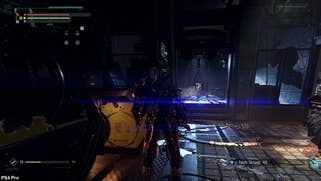
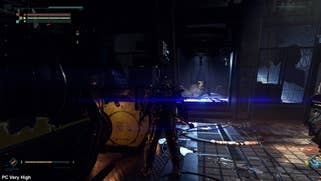
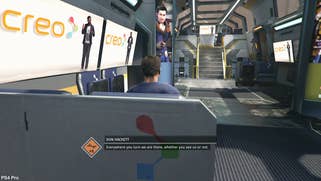
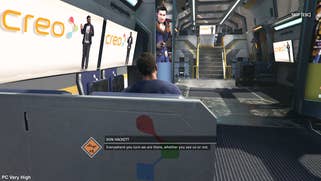
In terms of the platform comparisons, Deck 13 deserve kudos for one of the best PS4 Pro implementations we've seen. We'll admit it - we're a bit worried about the Pro at this point, in the wake of some sub-optimal support, lack of 1080p super-sampling in many titles or no appreciable support at all on Prey. But The Surge is different, offering a 2880x1620 high resolution mode that looks good on 4K screens while offering a 1080p performance mode that provides an absolute rock-solid lock at 60fps. And yes, users with full HD screens can select both modes, meaning super-sampling is available. The only downside is that you'll need to reboot the game to switch between modes - but we can live with that.
The reason this works so well comes down to the implementation. In Rise of the Tomb Raider, for instance, the quality modes do operate at a smooth 30fps but the high-performance mode is very unstable in comparison. Nioh is the opposite - the 60fps mode is great, but the high quality mode suffers from bad frame pacing and judder. It's the same deal with Snake Pass, while Final Fantasy 15 is even worse with most of the modes available suffering from obvious flaws.
The real winner here is the performance mode. By dropping the resolution to 1080p, the performance mode delivers a very smooth 60 frames per second experience. We played the game using this mode for hours and only managed to stumble across a couple minor dips throughout. This is exactly what Pro owners wanted from the beginning - a choice between image quality or frame-rate with both modes being equally well implemented. The game does play well enough at 30fps but as a fast paced, hard-as-nails action game, it benefits tremendously from a higher frame-rate so it's nice to be able to enjoy it on a console.
There's more. Deck 13's pitch to the enthusiast gamer includes one of the most comprehensive options screens we've ever seen on consoles. Don't like motion blur? You can turn it off. Not a fan of those slow motion sequences? You can adjust them! Do you want to adjust the feel and appearance of the camera motion? There are many options available for you. The lens flare adjustment is even a full on slider - how crazy is that? The point is - from visual settings to HUD elements to controls there is a lot of adjustment possible in The Surge on all three platforms, it's not just reserved for PC users.









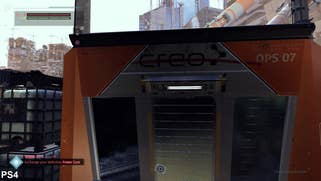
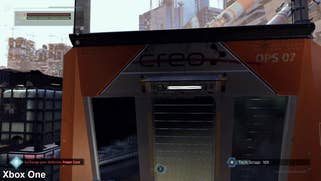
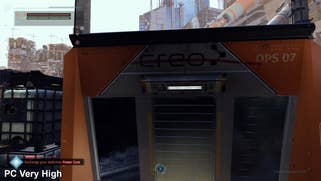
But The Surge does hand-in a proper PC version of the game, not just a port, and it looks and plays well. It offers support for things like ultra-wide resolutions, frame-rates higher than 60fps and even resolution scaling. Higher resolution textures are available, but the majority of the PC settings are all about refinement. Shadowmap resolution is doubled on very high settings, while volumetric light quality can be increased beyond the level available on consoles. We tried a GTX 970 and hit a very consistent 1080p60 even when using the console-beating very high settings. GTX 980 Ti took this up to 1440p at 60fps on the same quality levels, while 4K at 30fps is equally achievable.
The base PlayStation 4 and Xbox One versions also hand in good, solid, locked 30fps experiences with just some minor differences. As you might expect, the Sony platform operates at full 1080p while Xbox One hands in a 900p presentation. Compared to Lords of the Fallen, though, this is a tremendous improvement. The resolutions are the same between The Surge and Lords, but performance is so much better. The only blemish comes down to the use of SMAA anti-aliasing, which does look a little jagged at point.
The only real visual difference between the two comes down to screen-space reflections - weirdly enough, these are enabled on Xbox One but not present on PS4 or the PS4 Pro. There is a chance they could return in a future patch on PS4 but to maintain 60 frames per second on the Pro, they had to go. As things stand though, the backup cubemap implementation works well enough.
Ultimately, whichever version you decide to play, The Surge will treat you well - and there are further enhancements to come in future updates, including HDR support. It's not often that a multi-platform game is completely rock solid on every platform, but that is absolutely the case here. Each version feels crafted for the specific platform while taking advantage of its capabilities. It may not be the most striking game you've seen, but it does a lot of things very well. Clearly the Fledge engine is highly capable. We'll leave the breakdown of the gameplay to the Eurogamer review, but from our perspective, it's proven to be quite addictive. It's very challenging but rewarding and worth a look, and for PS4 Pro owners especially - if you've been feeling a little overlooked recently, the implementation offered here really is first class.






